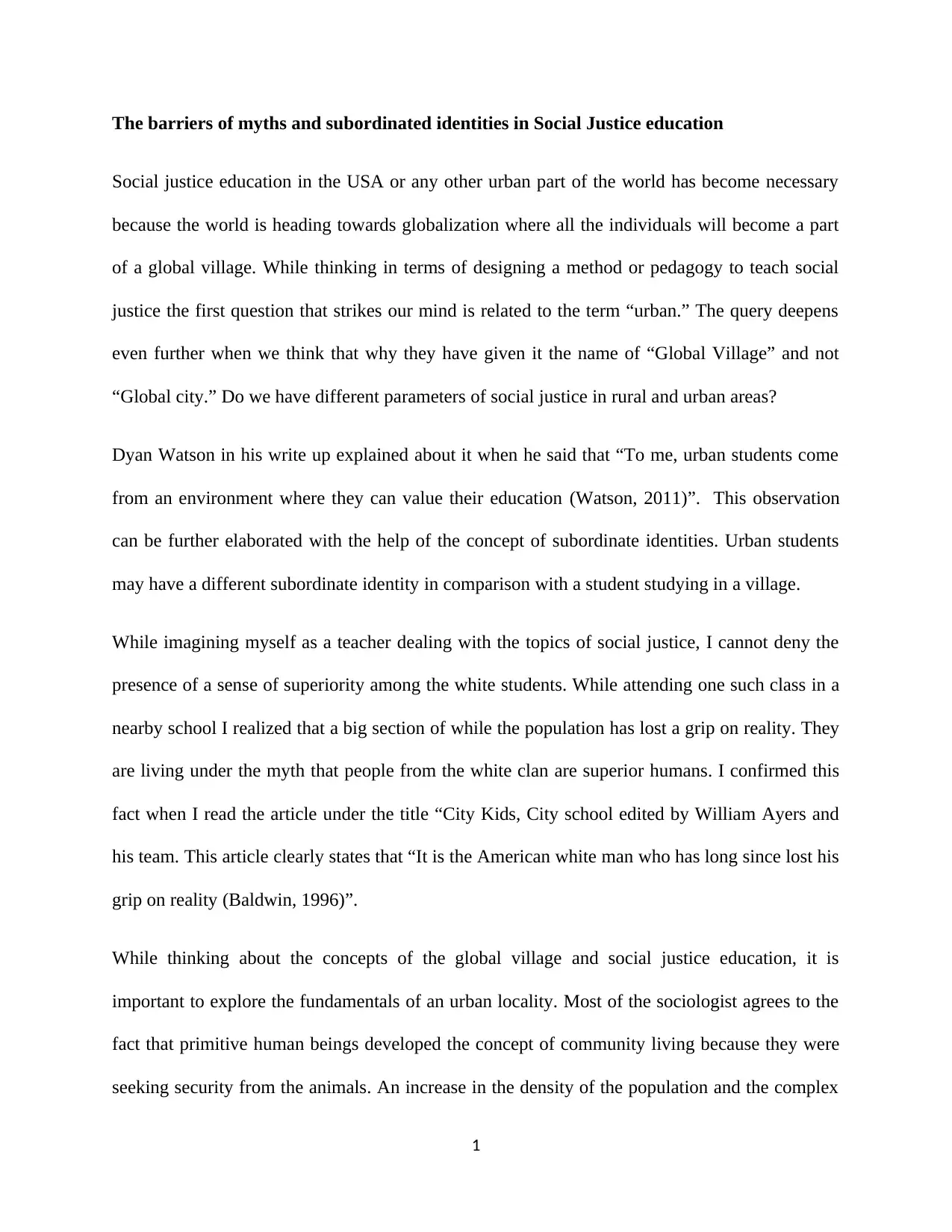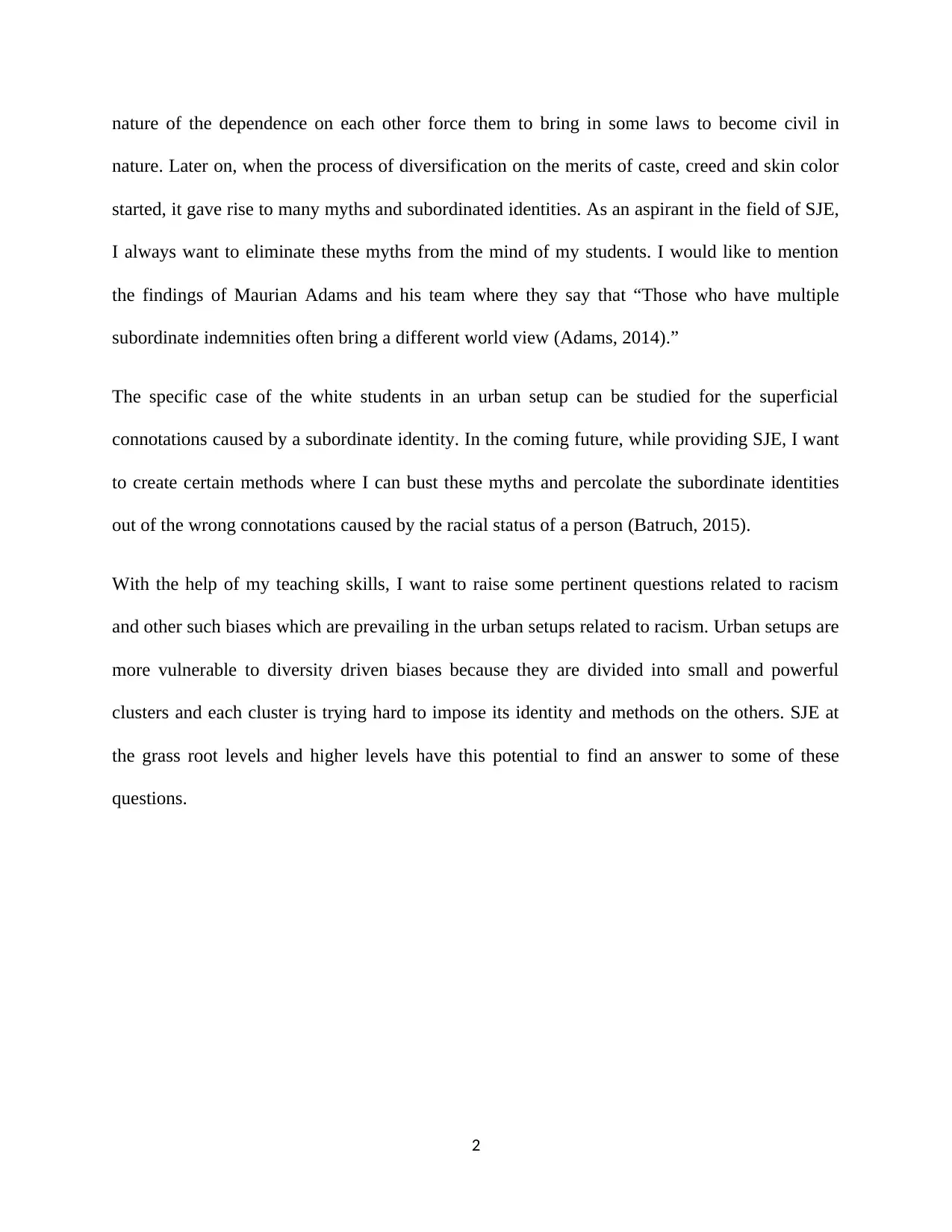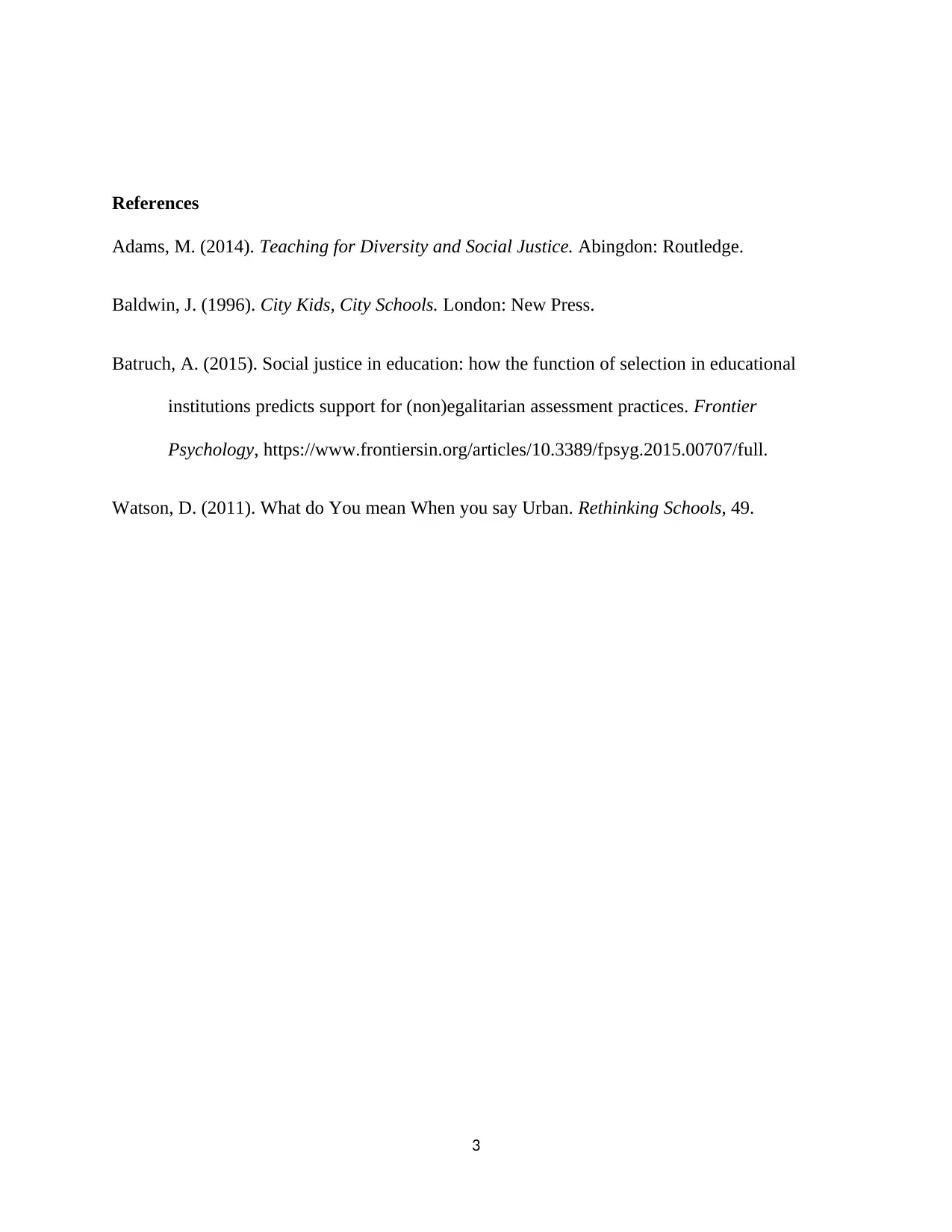Exploring Barriers in Social Justice Education: Myths and Identities
VerifiedAdded on 2022/08/19
|3
|745
|15
Essay
AI Summary
This essay delves into the crucial topic of social justice education (SJE), particularly within urban environments, highlighting the impact of globalization and the concept of a 'global village.' It examines the challenges of teaching SJE, focusing on the influence of myths and subordinated identities, especially among white students who may hold a sense of superiority. The essay references key literature, including works by Dyan Watson and William Ayers, to illustrate how urban students' experiences and identities shape their understanding of social justice. It emphasizes the importance of addressing racial biases and creating educational methods to dismantle myths and challenge negative connotations associated with racial status. The author, aspiring to work in SJE, aims to facilitate critical thinking about racism and diversity-driven biases prevalent in urban settings, ultimately seeking to find answers to questions of equity and inclusion within both grassroots and higher education levels. The essay underscores the potential of SJE to foster a more just and equitable society by confronting these complex issues.
1 out of 3




![[object Object]](/_next/static/media/star-bottom.7253800d.svg)